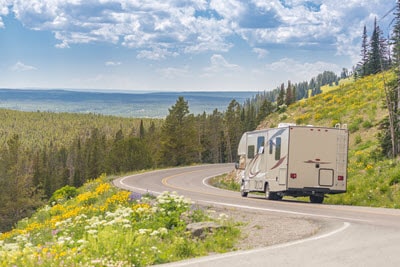What are the Safety Concerns Presented by Recreational Vehicles?
 A recreational vehicle is a house on wheels—what could be more fun for a retiree adventure or family vacation? Everything you need—including the kitchen sink—is with you as you explore national and state parks, beaches, and even city centers. Unfortunately, many people don’t realize how dangerous it can be to be a passenger in an RV during a crash. Depending on the class rating of the motorhome, it may not even be inspected for safety issues. Learn more about how to stay safe on your RV adventure.
A recreational vehicle is a house on wheels—what could be more fun for a retiree adventure or family vacation? Everything you need—including the kitchen sink—is with you as you explore national and state parks, beaches, and even city centers. Unfortunately, many people don’t realize how dangerous it can be to be a passenger in an RV during a crash. Depending on the class rating of the motorhome, it may not even be inspected for safety issues. Learn more about how to stay safe on your RV adventure.
Class A, B, or C: Which Is Safest?
Each class of motorhome is subject to different safety codes and offers safety advantages and disadvantages. A key piece of information to understand is that, while the driving parts of RVs are usually built by automotive manufacturers and adhere to the same safety standards as ordinary cars and trucks, the living parts of them are manufactured by smaller, specialized companies and are not subject to automotive safety standards. Also, it is never safe to walk around in an RV while it is in motion, to sit on chairs or benches in the living compartment without a seatbelt, or to lie down or sleep on beds while the vehicle is moving. We discuss each class and the safety implications here:
- Class A. Class A motorhomes are the big, pricey buses you see cruising down the highway. It would seem that their size and weight would make them the safest vehicles on the road, but it all depends on the price tag. Class A motorhomes that are built on a commercial diesel bus chassis are among the most expensive, but are also the most crashworthy. Most Class A RVs, however, are built on a flat truck chassis from an auto manufacturer such as GM or Ford. These are more affordable, but less stable and less crashworthy because there is not as much support of the living area of the RV. Class A motorhomes have seatbelts, but usually no airbags and the driver and front seat passenger have little buffer between themselves and whatever they may be colliding with.
- Class B. Also known as camper vans, these RVs are often built by major automotive manufacturers and adhere to strict safety standards. They are usually equipped with airbags and have been crash tested. As with any RV, passengers are safest buckled in the seat next to the driver, not sitting or walking around in the back.
- Class C. These vehicles are built on a truck cabin chassis and are as safe as any truck for drivers and passengers wearing seatbelts in the driving compartment. However, the living cabin is not crash-tested and will disintegrate in a rollover or major collision. Passengers should never travel in the living compartment.
Another camping option that takes advantage of modern automotive safety technology is to pull a camping trailer behind a standard truck or SUV. Passengers should never ride in a trailer while in motion, of course, but this option allows all travelers to be buckled in in a crash-tested vehicle with airbags and other safety features. Make sure your vehicle is approved to tow the weight of the camper and that the driver has taken a class in driving with a large trailer.
Driver Experience
Another safety concern with recreational vehicles is driver skill and experience. In Missouri, there are no special licensing requirements for drivers of any size RV. This is a concern as these large vehicles can be difficult to drive. Kansas requires a non-commercial Class A or B license to drive an RV weighing over 26,000 pounds (a large Class A motorhome). Despite the legal requirements, all drivers should practice extensively before heading out with the family on a cross-country trip.
Have You Been Injured In A Kansas City Area Car Accident?
If you’ve been injured in a car accident you need to speak with an experienced car accident lawyer as soon as possible. Contact us online or call our Kansas City office directly at 816.471.5111 to schedule your free consultation.

